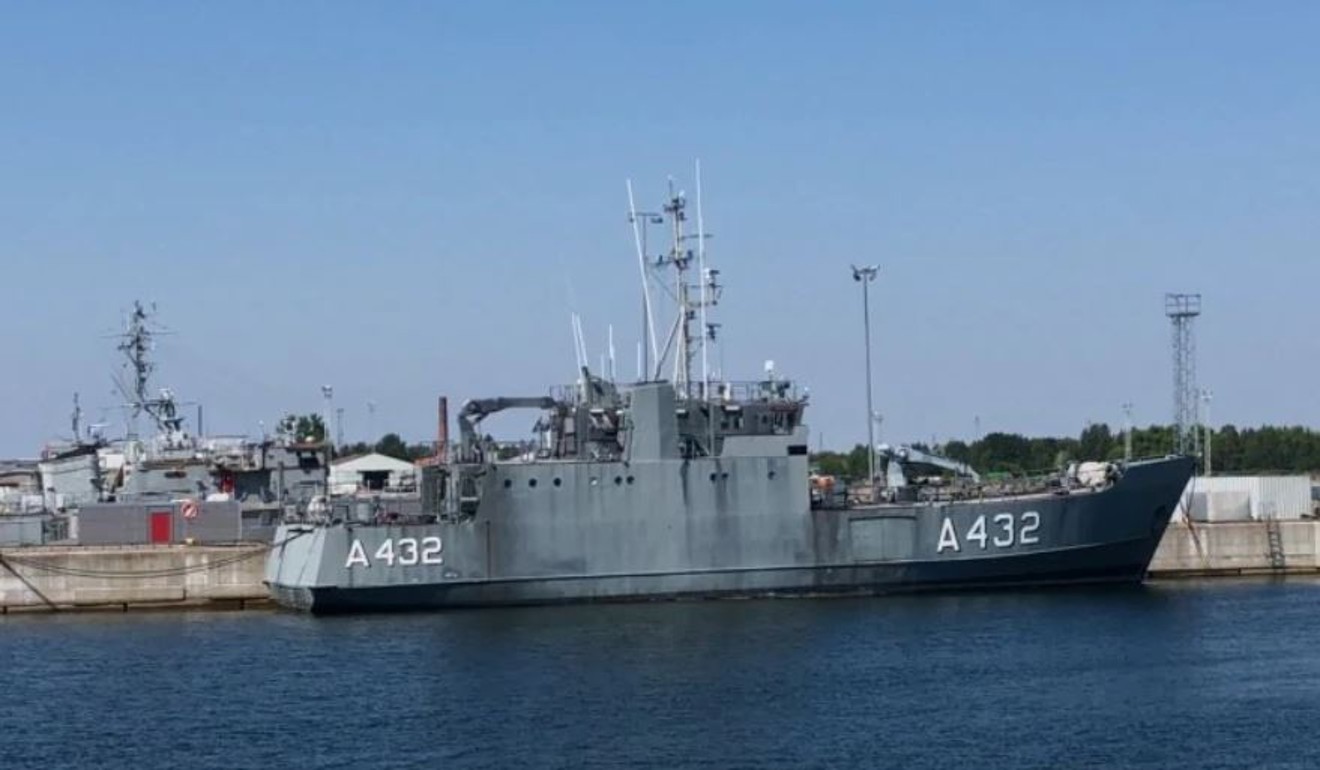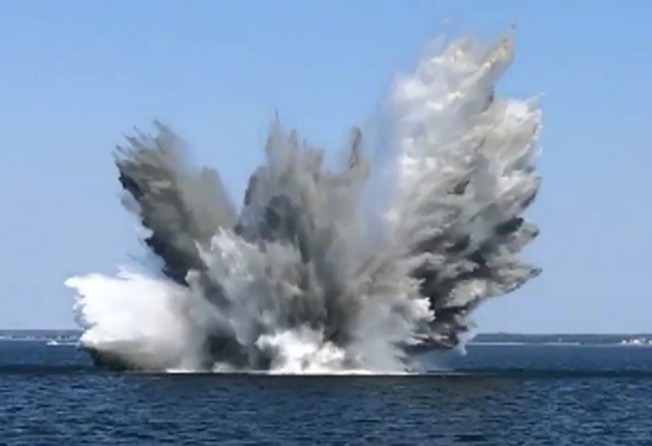
Estonia is still clearing thousands of second world war mines from its waters
- Roughly 80,000 mines are still floating in the Baltic Sea

The waters of Tallinn Bay off the shore of Estonia’s capital are usually teeming with boats. But on a recent summer day, the boats stayed huddled near shore as a military diver slipped beneath the surface of the bay.
After a 90-second descent through opaque green water, Chief Petty Officer 2nd Class Imre Alljärv halted next to a tubular black object – a second world war-era mine containing enough explosives to sink one of the cruise ships that frequently pass by.
He placed explosive charges of his own around the mine, then headed back up toward the sunlight.
A few minutes later, Alljärv set off his charges, turning the mine into a plume of water, sediment and metal that rocketed into the air and released a pungent smell.
One down, 80,000 or so to go.
That’s roughly how many mines are still floating in the Baltic Sea.
“It’s unbelievable how many mines there still are,” said Commander Peeter Ivask, the head of Estonia’s navy.
“Our mission here will last decades.”
Mines and bombs from the second world war also litter other bodies of water, including the North Sea and the Mediterranean Sea. But the only European states that have systematically attempted to clear the rusting weapons are those around the Baltic.
After the second world war, the Allies decided to dump 300,000 metric tonnes of munitions into the ocean, which appeared to be the safest and most easily accessible disposal ground.
But some of the weapons – including landmines containing mustard gas – were simply dropped into the Baltic and North seas rather than being taken to faraway dump sites.

The result is a particularly dangerous stretch of water. Three Dutch fishermen were killed in 2005 after they accidentally reeled in am American bomb, which then exploded.
In August, 2,000 people were evacuated from the Polish resort city of Kolobrzeg after three bombs were discovered in the nearby bay.
And throughout the Baltic Sea, fishermen are banned from accessing waters where the density of mines is so high that clearing the seabed is too expensive.
The waters near Baltic ports were especially common targets during the war and still pose the biggest risks today.
Many mines are too close to shore to be destroyed on the spot; authorities must move them farther away, a dangerous prospect, before they can be detonated.
No area of the Baltic is more heavily mined than the waters near Tallinn. During the second world war, the city was the gateway to St. Petersburg – then called Leningrad – and the Soviet Union’s Baltic Fleet. The Estonian government estimates that there are up to 50,000 mines hidden in the seabed nearby.
The Estonian navy’s primary peacetime mission consists of cleaning up what the Germans and Russians left behind.
But it has only three small minehunting vessels for the task – and merely 300 sailors in the entire force. “Sometimes, when we have US destroyers visiting the bay, there are more American soldiers on board than our country has sailors,” said 2nd Lieutenant Karl Baumeister, a navy spokesman.
Divers such as Alljärv have to complete years of training and then attend a specialised course for mine-clearance missions in neighbouring Latvia. As soon as training is completed, new divers are almost immediately deployed.
“Many American divers with the same training might go 10 or even 20 years without ever seeing a real mine underwater,” Alljärv said.
By his estimate, he has defused about 50 mines in his 13 years on the job.
The Estonian navy also has remote-controlled vehicles that can investigate and detonate mines. But Alljärv prefers to head to the bottom himself, even though conditions in the Baltic Sea are rarely ideal. Visibility is sometimes no more than a few inches, especially as the sea heats up during the summer. “Usually we work as if we were blindfolded,” Alljärv said.
Even though the mines remain a potentially fatal threat, dealing with them daily has helped him shake off some of his initial fears.
“I’m not really nervous any more. I actually think they’re exciting,” Alljärv said.
Others share his enthusiasm. During an annual countermining operation that brings together many Baltic and Western European navies, there’s an unofficial competition to see who can clear the most ordnance from the water.
These days, Baumeister said, the Germans are usually winning.